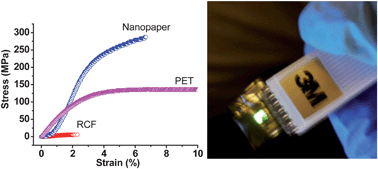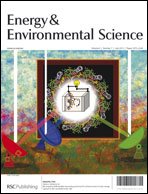Biodegradable transparent substrates for flexible organic-light-emitting diodes†
Abstract
Electronics on flexible and transparent substrates have received much interest due to their new functionalities and high-speed roll-to-roll manufacturing processes. The properties of substrates are crucial, including flexibility, surface roughness, optical transmittance, mechanical strength, maximum processing temperature, etc. Although plastic substrates have been used widely in flexible macroelectronics, there is still a need for next-generation sustainable, high-performance substrates which are thermally stable with tunable optical properties and a higher handling temperature. In this communication, we focus on cellulose-based transparent, biodegradable substrates incorporating either nanopaper or a regenerated cellulose film (RCF). We found that both their optical and mechanical properties are dramatically different due to the difference of their building blocks. Highly flexible organic-light-emitting diodes (OLEDs) are also demonstrated on the biodegradable substrates, paving the way for next-generation green and flexible electronics.


 Please wait while we load your content...
Please wait while we load your content...